Fortinet NSE4_FGT-7.2 Fortinet NSE 4 - FortiOS 7.2 Exam Practice Test
Fortinet NSE 4 - FortiOS 7.2 Questions and Answers
Which two attributes are required on a certificate so it can be used as a CA certificate on SSL Inspection? (Choose two.)
16
FortiGate is configured as a policy-based next-generation firewall (NGFW) and is applying web filtering and application control directly on the security policy. Which two other security profiles can you apply to the security policy? (Choose two.)
An administrator has configured outgoing Interface any in a firewall policy. Which statement is true about the policy list view?
Refer to the exhibits.
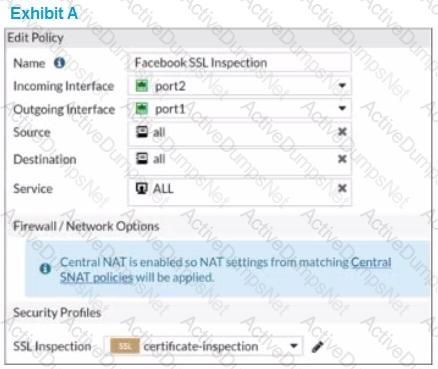
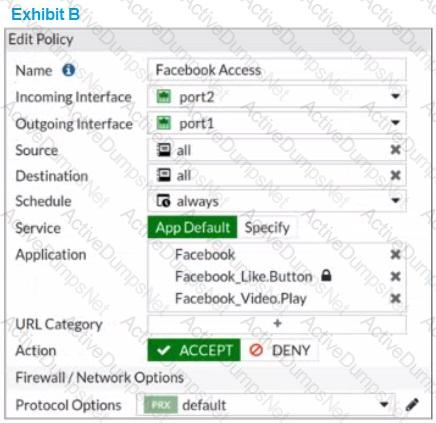
The exhibits show the SSL and authentication policy (Exhibit A) and the security policy (Exhibit B) for Facebook .
Users are given access to the Facebook web application. They can play video content hosted on Facebook but they are unable to leave reactions on videos or other types of posts.
Which part of the policy configuration must you change to resolve the issue?
Which two statements are true about the FGCP protocol? (Choose two.)
73
If Internet Service is already selected as Source in a firewall policy, which other configuration objects can be added to the Source filed of a firewall policy?
7
An administrator has a requirement to keep an application session from timing out on port 80. What two changes can the administrator make to resolve the issue without affecting any existing services running through FortiGate? (Choose two.)
17
In consolidated firewall policies, IPv4 and IPv6 policies are combined in a single consolidated policy. Instead of separate policies. Which three statements are true about consolidated IPv4 and IPv6 policy configuration? (Choose three.)
Which statements best describe auto discovery VPN (ADVPN). (Choose two.)
113
What inspection mode does FortiGate use if it is configured as a policy-based next-generation firewall (NGFW)?
An administrator is configuring an IPsec VPN between site A and site B. The Remote Gateway setting in both sites has been configured as Static IP Address. For site A, the local quick mode selector is 192. 168. 1.0/24 and the remote quick mode selector is 192. 168.2.0/24.
Which subnet must the administrator configure for the local quick mode selector for site B?
Which two settings are required for SSL VPN to function between two FortiGate devices? (Choose two.)
Which two statements about FortiGate FSSO agentless polling mode are true? (Choose two.)
Refer to the exhibits.
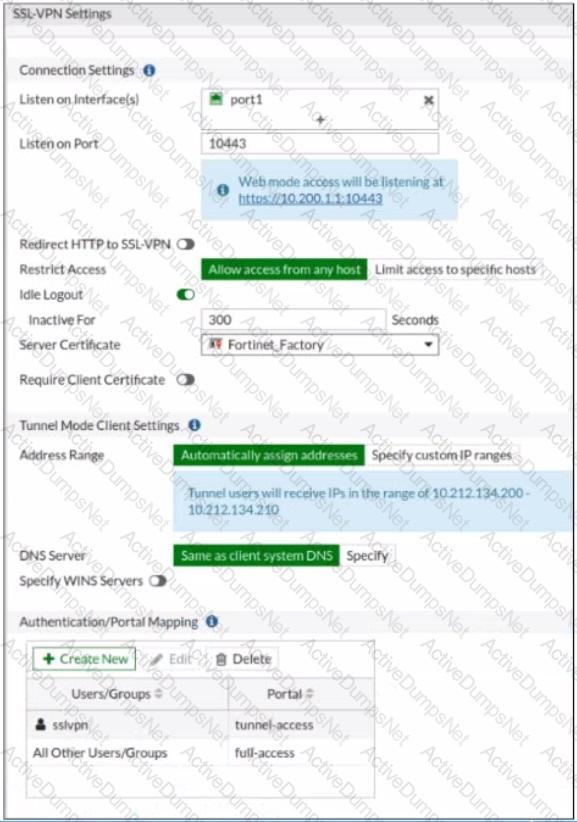
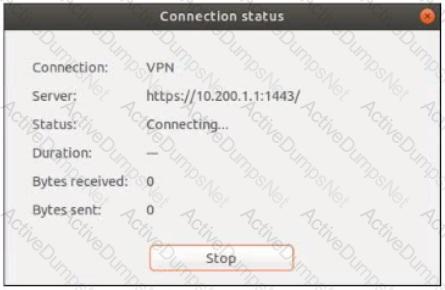
The SSL VPN connection fails when a user attempts to connect to it. What should the user do to successfully connect to SSL VPN?
Refer to the exhibit.
The exhibit shows a diagram of a FortiGate device connected to the network, the firewall policy and VIP configuration on the FortiGate device, and the routing table on the ISP router.
When the administrator tries to access the web server public address (203.0.113.2) from the internet, the connection times out. At the same time, the administrator runs a sniffer on FortiGate to capture incoming web traffic to the server and does not see any output.
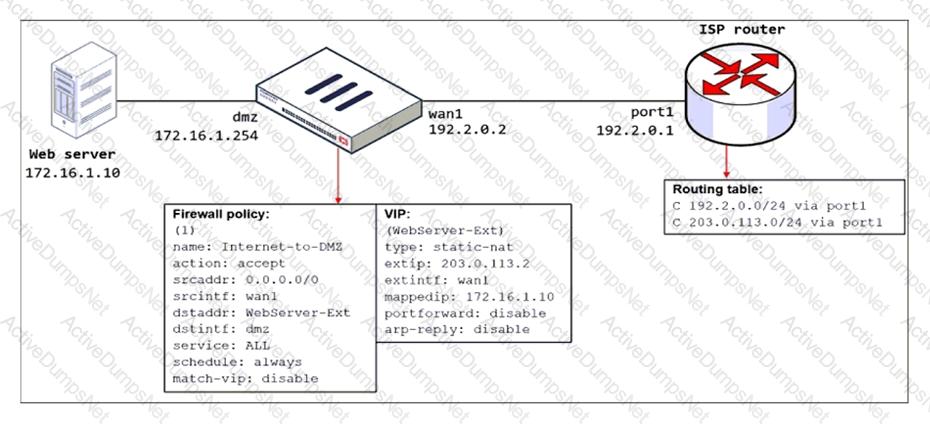
Based on the information shown in the exhibit, what configuration change must the administrator make to fix the connectivity issue?
Which statement describes a characteristic of automation stitches?
Refer to the exhibits.
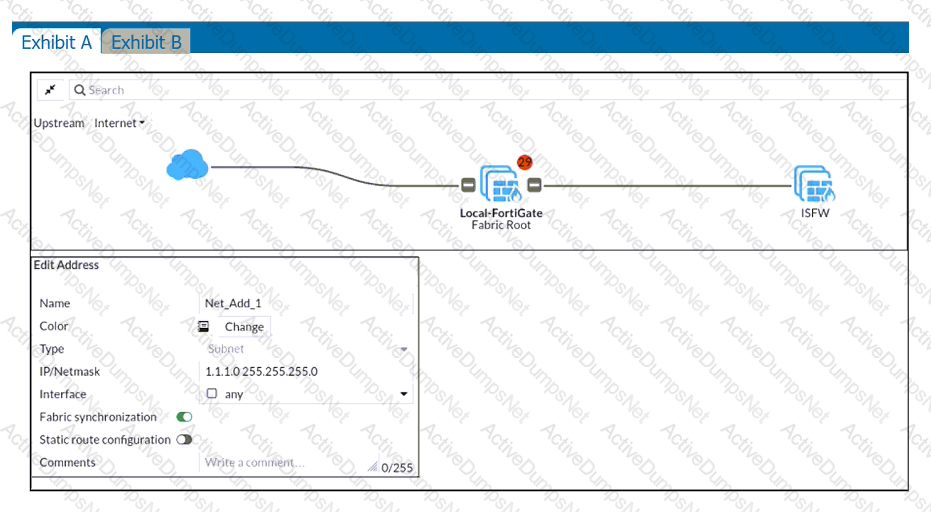
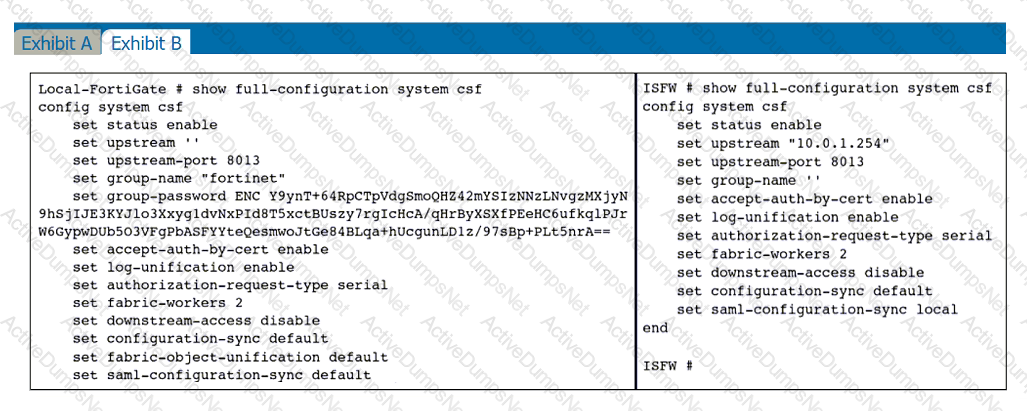
An administrator creates a new address object on the root FortiGate (Local-FortiGate) in the security fabric. After synchronization, this object is not available on the downstream FortiGate (ISFW).
What must the administrator do to synchronize the address object?
Which statement about the deployment of the Security Fabric in a multi-VDOM environment is true?
Which of the following SD-WAN load balancing method use interface weight value to distribute traffic? (Choose two.)
Refer to the exhibit.
An administrator added a configuration for a new RADIUS server. While configuring, the administrator selected the Include in every user group option.
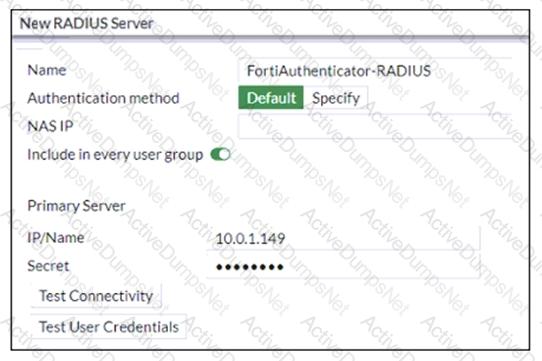
What is the impact of using the Include in every user group option in a RADIUS configuration?
Refer to the exhibit.
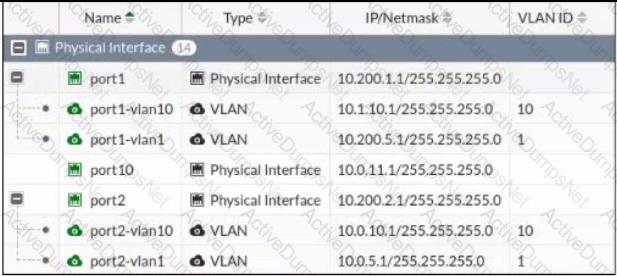
Given the interfaces shown in the exhibit. which two statements are true? (Choose two.)
46
Which two types of traffic are managed only by the management VDOM? (Choose two.)
43
Which two statements are correct about SLA targets? (Choose two.)
By default, FortiGate is configured to use HTTPS when performing live web filtering with FortiGuard servers.
Which CLI command will cause FortiGate to use an unreliable protocol to communicate with FortiGuard servers for live web filtering?
Which of the following statements is true regarding SSL VPN settings for an SSL VPN portal?
Refer to the exhibit.
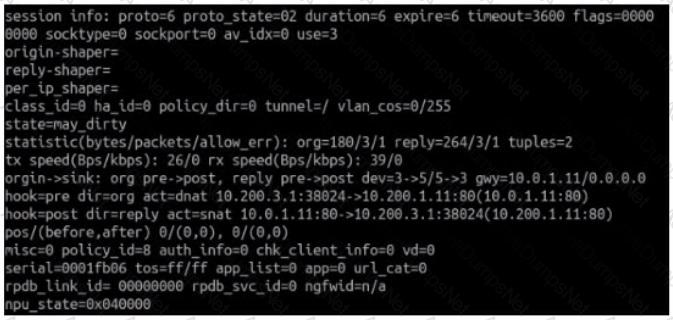
Which contains a session diagnostic output. Which statement is true about the session diagnostic output?
51
Which of the following statements about central NAT are true? (Choose two.)
What are two benefits of flow-based inspection compared to proxy-based inspection? (Choose two.)
94
An administrator observes that the port1 interface cannot be configured with an IP address. What can be the reasons for that? (Choose three.)
45
Which three CLI commands can you use to troubleshoot Layer 3 issues if the issue is in neither the physical layer nor the link layer? (Choose three.)
Refer to the exhibit.
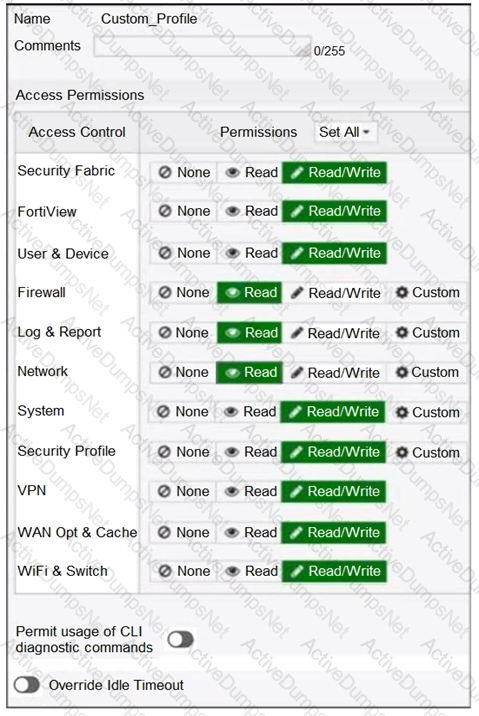
Based on the administrator profile settings, what permissions must the administrator set to run the diagnose firewall auth list CLI command on FortiGate?
Examine the exhibit, which contains a virtual IP and firewall policy configuration.
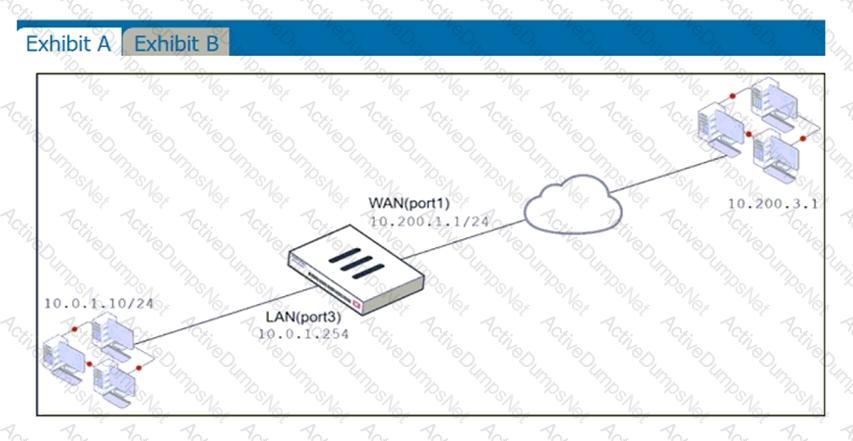
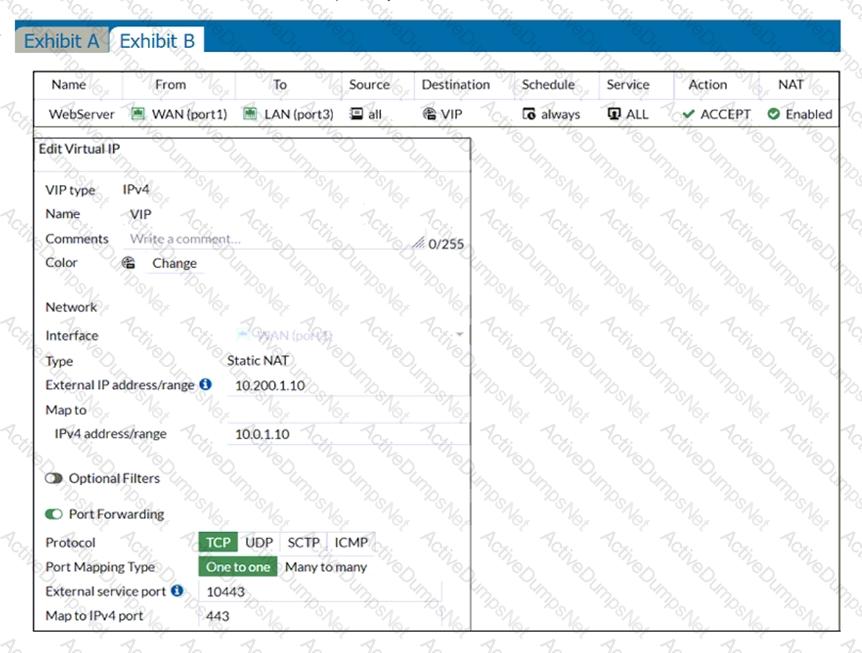
The WAN (port1) interface has the IP address 10.200. 1. 1/24. The LAN (port2) interface has the IP address 10.0. 1.254/24.
The first firewall policy has NAT enabled on the outgoing interface address. The second firewall policy is configured with a VIP as the destination address. Which IP address will be used to source NAT the Internet traffic coming from a workstation with the IP address 10.0. 1. 10/24?
68
If the Services field is configured in a Virtual IP (VIP), which statement is true when central NAT is used?
Which three statements explain a flow-based antivirus profile? (Choose three.)
When a firewall policy is created, which attribute is added to the policy to support recording logs to a FortiAnalyzer or a FortiManager and improves functionality when a FortiGate is integrated with these devices?
Refer to the exhibit.
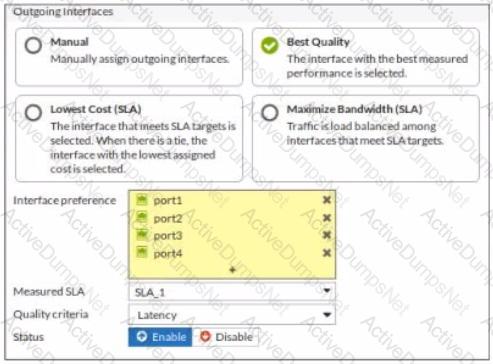

The exhibit contains the configuration for an SD-WAN Performance SLA, as well as the output of diagnose sys virtual-wan-link health-check . Which interface will be selected as an outgoing interface?
Refer to the exhibit.

Based on the raw log, which two statements are correct? (Choose two.)
The IPS engine is used by which three security features? (Choose three.)
Refer to the exhibit.
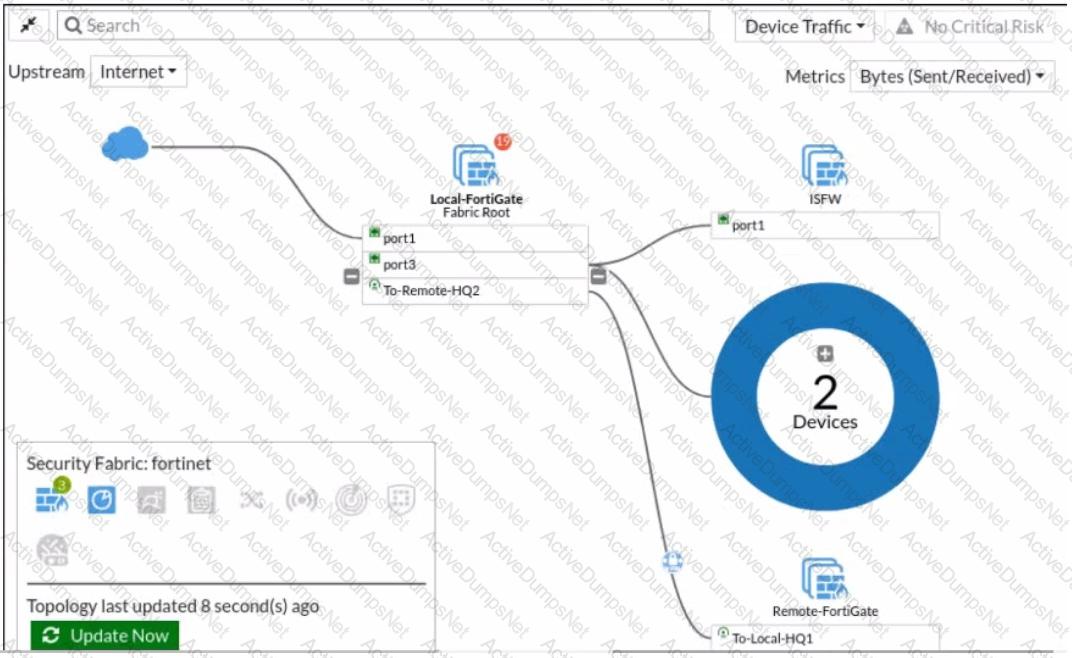
Given the security fabric topology shown in the exhibit, which two statements are true? (Choose two.)
An administrator configures FortiGuard servers as DNS servers on FortiGate using default settings.
What is true about the DNS connection to a FortiGuard server?
Which statement is correct regarding the use of application control for inspecting web applications?
In an explicit proxy setup, where is the authentication method and database configured?
49
A network administrator is configuring a new IPsec VPN tunnel on FortiGate. The remote peer IP address is dynamic. In addition, the remote peer does not support a dynamic DNS update service.
What type of remote gateway should the administrator configure on FortiGate for the new IPsec VPN tunnel to work?
FortiGate is operating in NAT mode and is configured with two virtual LAN (VLAN) subinterfaces added to the same physical interface.
In this scenario, which statement about VLAN IDs is true?
6
Which three options are the remote log storage options you can configure on FortiGate? (Choose three.)
Refer to the exhibits.
Exhibit A shows a topology for a FortiGate HA cluster that performs proxy-based inspection on traffic. Exhibit B shows the HA configuration and the partial output of the get system ha status command.
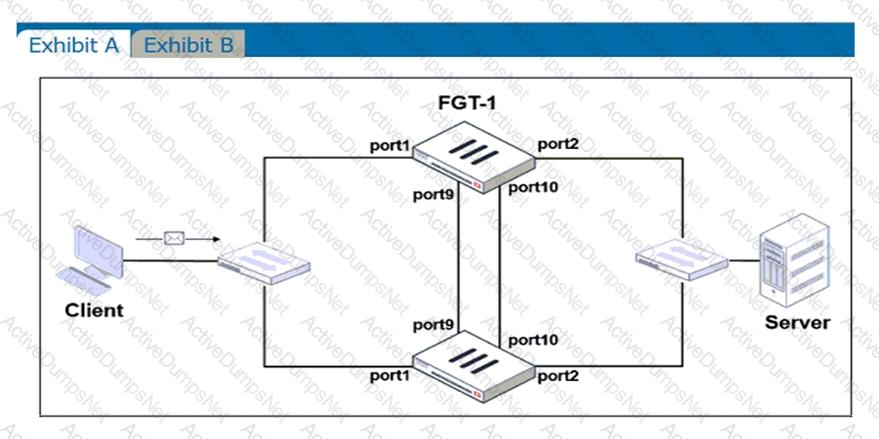
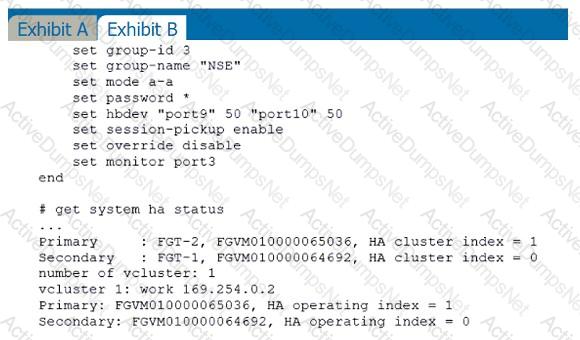
Based on the exhibits, which two statements about the traffic passing through the cluster are true? (Choose two.)
18
If the Issuer and Subject values are the same in a digital certificate, which type of entity was the certificate issued to?
24
To complete the final step of a Security Fabric configuration, an administrator must authorize all the devices on
which device?
Which engine handles application control traffic on the next-generation firewall (NGFW) FortiGate?
40
Which CLI command will display sessions both from client to the proxy and from the proxy to the servers?
FortiGate is operating in NAT mode and is configured with two virtual LAN (VLAN) subinterfaces added to the same physical interface.
In this scenario, what are two requirements for the VLAN ID? (Choose two.)
